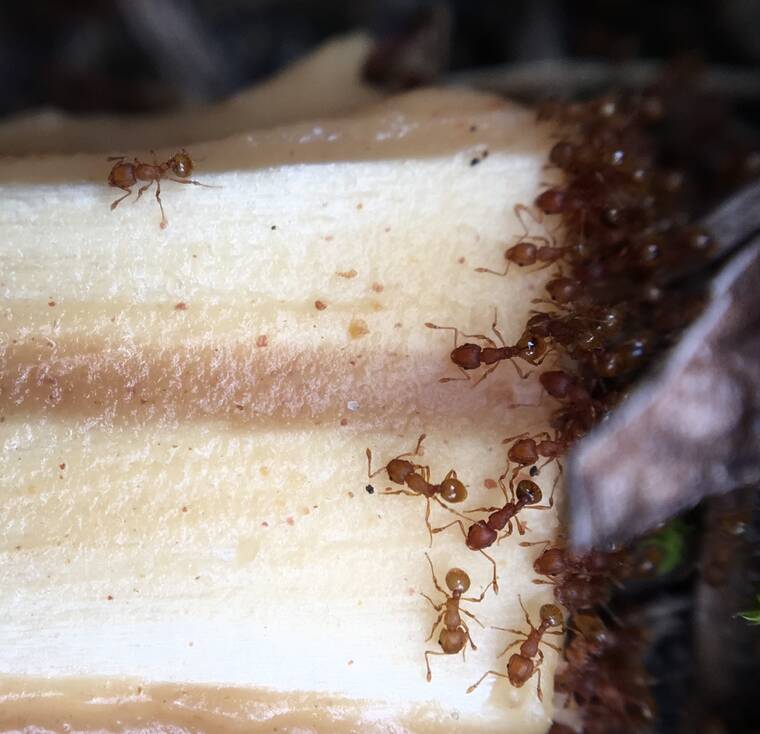Residents are urged to be on the lookout for little fire ants during what the state Department of Land and Natural Resources has called “Stop the Ant Month.”
First detected on Hawaii Island in 1999, little fire ants are a highly invasive species that can devastate local agriculture and wildlife, as well as irritate humans and pets with their painful bites.
In order to manage ant populations throughout the state, the DLNR is asking residents to collect ants around their properties and submit them to the Hawaii Ant Lab or the Big Island Invasive Species Committee for identification.
Hawaii Ant Lab specialist Heather Forester said little fire ants are known to exist in every district on the Big Island.
“When I started nine years ago, in West Hawaii they thought they were really just an east-side problem,” Forester said. “But we’ve since discovered they can still thrive in dry conditions or even on barren lava rock.”
Forester said there are more than 60 other species of ants in the state — all of which are invasive, because there are no native ant species in Hawaii — and it can therefore be difficult to confirm whether an ant is a little fire ant without being bitten. However, she said that both the ant lab and BIISC will inspect and identify community-submitted ant samples for free.
To take an ant sample, Forester said you should smear peanut butter on a chopstick or Popsicle stick and leave it around plants for about an hour or so. Then, place the stick into a sealable bag and freeze it overnight before mailing it or delivering it to Hawaii Ant Lab, 16 E. Lanikaula St., Hilo, HI 96720.
Forester advised people mailing samples to make sure the postage is correct, because sending a rigid item like a Popsicle stick with improper postage can lead to it getting returned to sender.
Should a little fire ant infestation be confirmed, Forester recommended products certified by the Organic Materials Review Institute, which includes an insecticide bait called Advion WDG, but warned that Advion and other baits are meant for use on decorative plants like lawns only.
She also said bait should
only be used when it’s fresh, as
it can lose its appeal to ants about three months after being opened.
Meanwhile, she advised residents to be wary about inadvertently spreading ants.
“They’re hitchhiker ants,” Forester said. “They catch a ride on things we move around without realizing it. You’ll buy a pineapple, and you won’t realize there’s a queen hiding in the top, and you end up planting it, and there’s a new infestation.”
Residents can request a free ant collection kit at stoptheant.org.
Email Michael Brestovansky at mbrestovansky@hawaiitribune-herald.com.






